-

Disposable Sharp Syringe Bin Container
Yellow/red/blue Sharps Syringe Bin Container Box Biohazard Needle Disposal for Chemo Waste
Place of origin: China
Usage: Medical Waste
Product name: Anti-spray Mask
Material: PP
Capacity: 1-15L
Application: Laboratory
Selling units: Single item
Single package size: 35X25X12 cm
Single gross weight: 15 kg
-

PRP tube
Material: Glass or Plastic Types: ACD+Gel, Sodium Citrate+Gel, PRF tube, ACD, Sodium Citrate Volume: 10mll, 12ml, 15ml, 20ml. Tube Size: 16*100mm, 16*120mm, 16*125mm, etc. -

Blood Collection Needle Safety Holder
Material: High polymer material Place of Origin: Hebei, China Brand Name: KWS MEDICAL Size: 13-16 mm Shelf Life: 2 years Packing: 2000pcs/ctn -

Medical Oxygen Mask
Material:PVC Place of Origin:Hebei, China Brand Name: KWS MEDICAL Size: adult, Child Shelf Life: 3 years -

Medical Suction Tube
Material: Non-toxic PVC Instrument classification: Class I Place of Origin: Hebei, China Brand Name: KWS MEDICAL Size: 3/6” 1.8m;3/16” 3.6m;1/4” 1.8m;1/4” 3.6m Quality Certification: CE, ISO, FSC Packaging Details: 1pc/blister bag,80pcs/ctn -

Disposable Urine Bag
Auxiliary medical device products for collecting urine in vitro -

Laboratory Micropipette Pipettes
Product Name: Laboratory Micropipette Pipettes
Place of origin: Hebei, China
material: PP plastic
Warranty: 3years
Customized support: OEM, ODM, OBM
Brand name: KWS
Packing: Bulk or individual
-

Stool Container
Used for collection stool samples from patients for corresponding medical testing projects. -

Urine Container
Used for collection urine samples from patients for corresponding medical testing projects. -

Negative Pressure Drainage Bag
Product Name: Negative Pressure Drainage Bag
Material: Medical Grade PVC
Lid color: White,Green,blue
Capacity: 1000ML/1500ML/2000ML/2500ML/3000ML
-

Vacuum Viral Transport Medium Tube
Product Name: Vacuum Viral Transport Medium Tube
Item: Non-Inactivated Viral Transport Media Tube and Inactivated Viral Transport Media Tube
Preservation Solution Color: Inactivated Viral Transport Media Tube: Colorless and transparent ; Non-Inactivated Viral Transport Media Tube: Pink red.
Tube Size: 13*100 mm
Preservation Solution Volume: 2~3 ml -
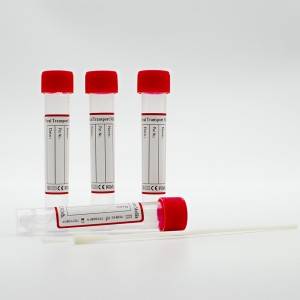
Inactivated Viral Transport Media Tube
Product Name: Inactivated Viral Transport Media Tube
Reagent Color: Colorless and transparent
Tube Size: 16*100 mm
Reagent Volume: 2~3 ml
Scope of application: This product is suitable for the collection, transportation and storage of virus sampling.
Inactivated preservation solution: mainly virus lysis preservation solution modified by nucleic acid extraction lysis solution. Containing a high concentration of guanidine salt during sampling can effectively inactivate the virus, which can effectively prevent the operator from secondary infection, but it also contains Rnase inhibitor, which can protect the virus nucleic acid from degradation, so that subsequent detection by NT-PCR . Moreover, it can be stored at room temperature for a relatively long time, saving the cost of virus sample storage and transportation. -
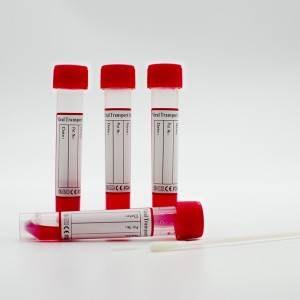
Non-Inactivated Viral Transport Media Tube
Product Name: Non-Inactivated Viral Transport Media Tube
Reagent Color: Red
Tube Size: 16*100mm
Reagent Volume: 2~3ml
Scope of application: This product is suitbale for the collection, transportation and storage of virus sampling.
Non-inactivated preservation solution: It is mainly a virus-maintaining preservation solution that is improved based on the delivery medium. It can maintain the activity of the virus in vitro and the integrity of the antigen and nucleic acid. It contains Hanks liquid foundation, gentamicin, fungal antibiotics, BSA (V), cryoprotectant, biological buffer and amino acids, etc., and it is not easy to protect the virus protein shell Decomposition, to a large extent, maintain the originality of the virus sample. In addition to nucleic acid extraction and detection, this storage solution can also be used for virus culture, isolation, and antigen detection. However, long-term storage after sampling requires strict low temperature. -
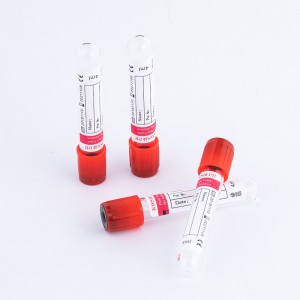
Plain Tube
Serum tube separates serum via the normal process of blood coagulation and serum can be further used after centrifugation. Serum tube is mainly used in serum tests such as serum biochemical analysis (liver function, renal function, myocardial enzymes, amylase,etc.),electrolyte analysis(serum potassium, sodium, chloride, calcium, phosphorus, etc.), thyroid function, AIDS, tumor markers and serology, drug testing, etc. -
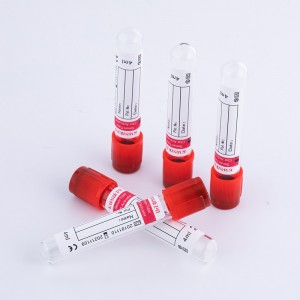
Clot Activator Tube
Coagulation tube is added with coagulant, activating thrombin and converting the soluble fibrinogen into non-soluble fibrin polymer, which further become fibrin aggregates. Coagulation tube is used for rapid biochemical analysis in the emergency setting. Our coagulation tube also contains blood glucose stabilizer and replaces the traditional blood glucose anti-coagulation tube. Thus, no anti-coagulation agent such as sodium fluoride/potassium oxalate or sodium fluoride/heparin sodium is needed for the tests of blood glucose and glucose tolerance. -

Gel & Clot Activator Tube
Coagulant is coated on the inner wall of the blood-collecting tube, accelerating blood coagulation and minimizing testing duration. Tube contains separation gel, which completely separates blood liquid component (serum) from solid component (blood cells) and aggregates both components inside the tube with barrier. Product can be used for blood biochemistry tests (liver function, renal function, myocardial enzyme function, amylase function, etc), serum electrolyte tests (serum potassium, sodium, chloride, calcium, phosphate, etc), thyroid function, AIDS, tumor markers, serum immunology, drug testing, etc. -

EDTAK2/EDTAK3
EDTA is an aminopolycarboxylic acid and a chelating agent that effectively sequesters calcium ion in blood. "Chelated calcium" removes calcium from the reaction site and stops endogenous or exogenous blood coagulation. Compared to other coagulants, its impact on blood cell aggregation and blood cell morphology is relatively smaller. Therefore, EDTA salts (2K, 3K) are commonly used as coagulants in routine blood testing. EDTA salts are not used in certain tests such as blood coagulation, trace elements and PCR. -
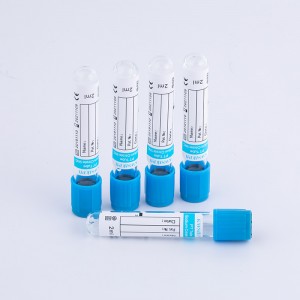
PT Tube
Sodium citrate functions as anti-coagulant via chelation with calcium in blood. Concentration of sodium citrate is 3.2% and the volume ratio of anti-coagulant vs. blood is l:9. It is mainly used for coagulation test (prothrombin time, thrombin time, active partial thromboplastin time, fibrinogen). The mixing ratio is 1 part citrate to 9 parts blood. -
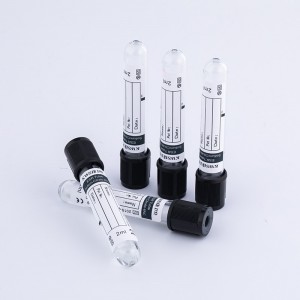
ESR Tube
The concentration of sodium citrate is 3.8%. The volume ratio of anticoagulant vs. blood is l:4. It is normally used for blood sedimentation test. High volume of anticoagulant dilutes blood and therefore, accelerates blood sedimentation rate. Due to little volume and negative pressure inside the tube, it needs some time for blood collection. Do patiently wait until blood stops flowing into the tube. -

Heparin Sodium/ Lithium Tube
The inner wall of the blood collection tube is uniformly sprayed with heparin sodium or lithium heparin, which can quickly act on blood samples, so that high-quality plasma can be quickly obtained. In addition to the characteristics of heparin sodium,lithium heparin also has no interference with all ions including sodium ions, so it can also be used for the detection of trace elements.

